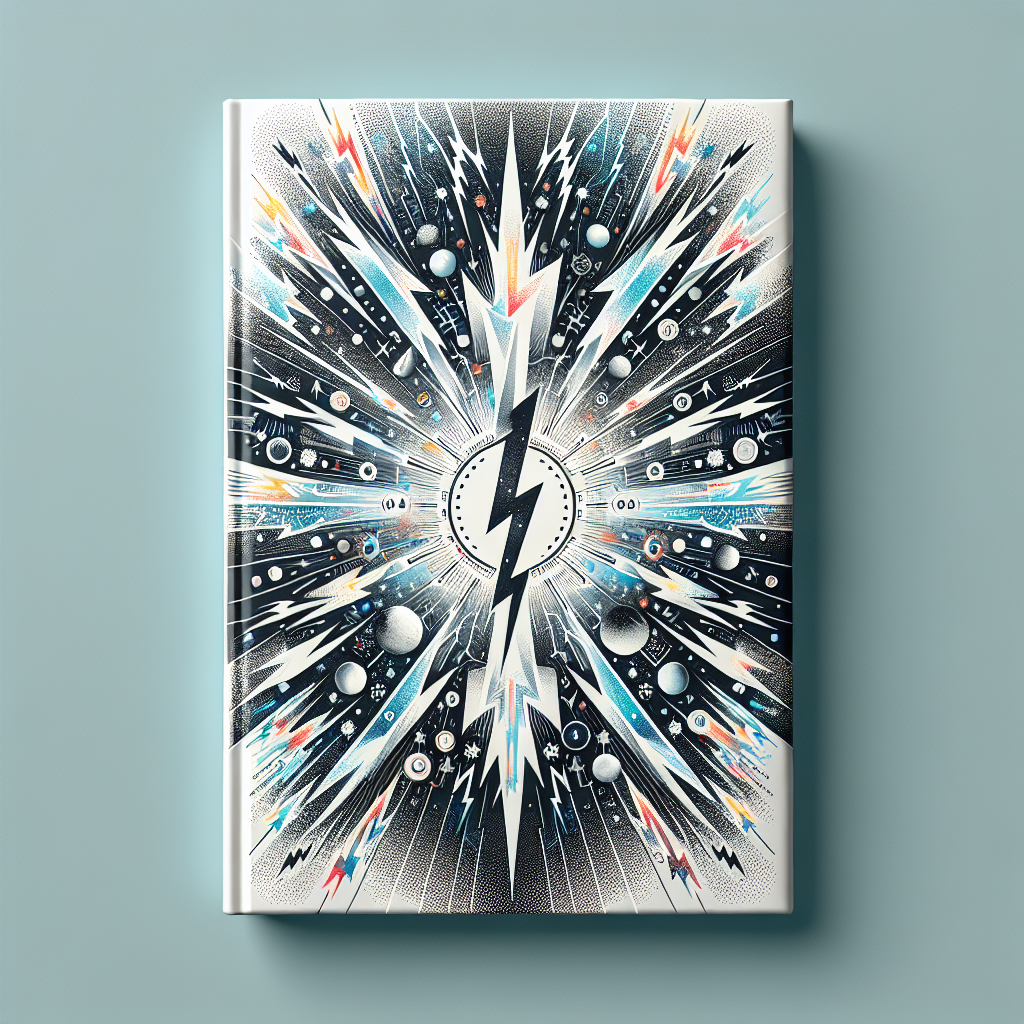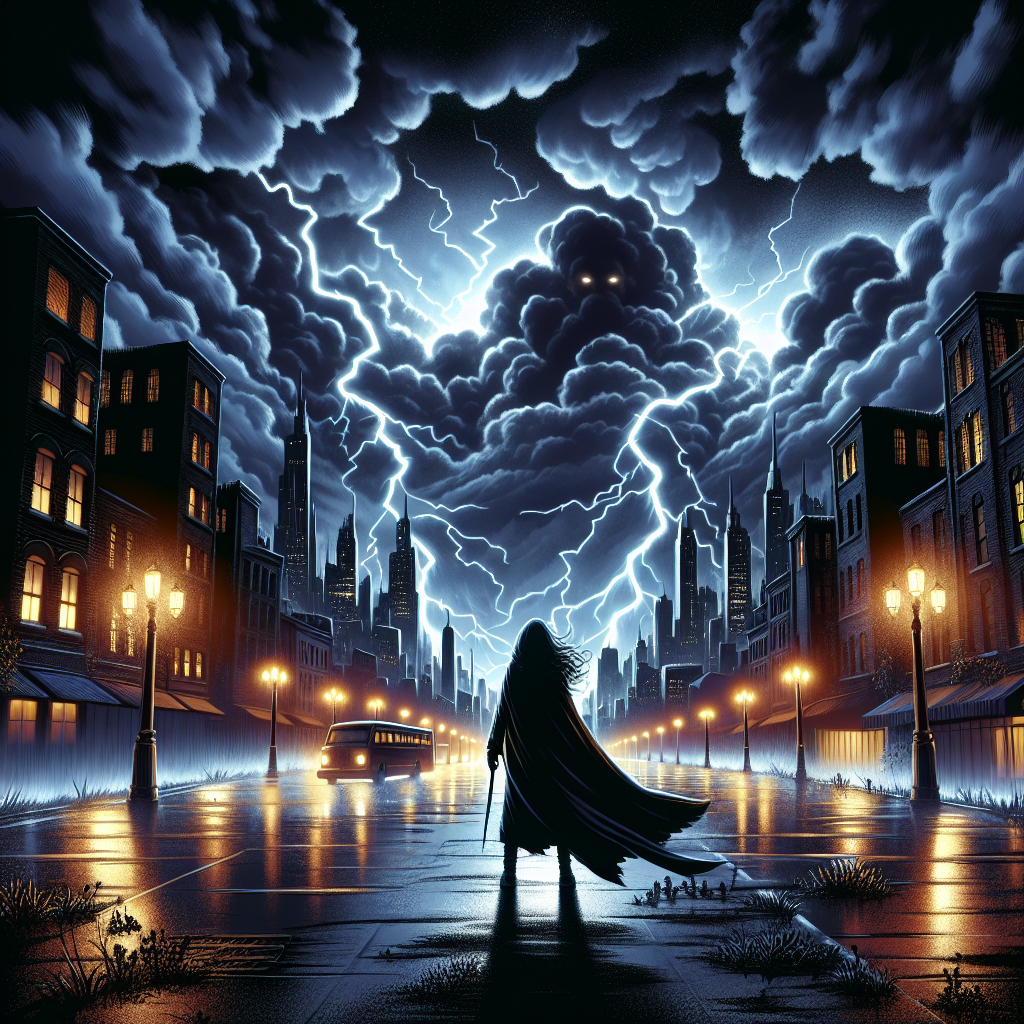
How to write flash fiction: welcome to the exciting world of flash fiction, the ultimate test of brevity in storytelling. Flash fiction, often referred to as short-short stories or micro fiction, typically consists of a significantly reduced word count, sometimes as few as 300-1000 words.
This bite-sized literature requires precision, creativity, and dexterity to tell a compelling story within its constraints. However, its compact nature doesn’t mean it lacks emotional depth or narrative force. Instead, it pushes you to focus on the most important elements of storytelling – every sentence must drive the plot forward, every word counts.
You can use the advice in this guide or you can checkout one of our AI powered Flash Fiction generators. One generates flash fiction from a prompt or idea, the other will generate flash fiction from just a genre or theme.
One of the greatest advantages of writing flash fiction is that it’s a fantastic exercise for beginning writers. It compels you to sharpen your writing skills and learn how to create powerful narratives with economy of words. It also encourages brevity and clarity in your writing habits. Additionally, when you master the art of flash fiction, you gain essential techniques that would be invaluable in other forms of writing such as novels or plays.
Before we delve into how to write flash fiction, let’s define some terms. The plot is your story’s underlying structure – the sequence of events or actions carried out by the characters. Your story should have a clear beginning where you introduce the characters and setting, a middle where conflicts occur, and an end where these conflicts find resolution.
A scene in flash fiction is a pivotal moment that propels the story forward and carries significant weight due to the format’s brevity. Each scene needs to set mood, reveal character and advance plot effectively and efficiently.
Satire, another key element used frequently in flash fiction, uses humor, exaggeration or ridicule to expose and criticize people’s vices or follies, particularly in social or political contexts. Incorporating satire can add cheeky wit or searing commentary to your story, making it more engaging and thought-provoking.
Now that you’ve got a basic understanding of what flash fiction is and some key points of its structure, you’re ready to start crafting stories that make an impact. The simplicity of flash fiction belies its complex craft, but don’t be daunted! With the right approach, you can elevate your writing and masterfully depict riveting snapshots of life within this concise format. So, are you ready to dive into this rewarding literary form? Let’s begin our adventure with selecting a strategic genre for our story.
How To Write Flash Fiction – Choose Your Genre Strategically

Choosing a genre for your flash fiction is not a decision to be made lightly. It’s an important step which can drive the direction of every other decision you make throughout the crafting process. Whether you choose to delve into romance, thriller, horror or science fiction – or perhaps even a blend of them – depends largely on both your personal preference and what you think will resonate with your potential readers.
How do you make this critical choice? One way is to consider your own interests and experience. Are there certain genres that you tend to gravitate towards when reading or writing? Do you have specific knowledge or unique insights in any particular field? If so, these could serve as an excellent starting point for selecting your genre.
Flash fiction genre selection can also be guided by considering the themes you want to explore in your story. Themes are the central ideas that underpin a piece of literature, creating depth beyond the surface-level plot. For instance, if you’re looking to tackle issues of societal injustice, a dystopian science fiction setting might serve as an effective backdrop. If exploring relationship dynamics is more your cup of tea, then perhaps romantic flash fiction would be just right.
The chosen genre will heavily influence how your story unfolds and how it’s received by readers. A good suspense-thriller flash fiction story can be like solving a puzzle; it needs careful planning from start to end. On the other hand, romance flash fiction stories commonly follow a journey of emotional discovery, necessitating strong emphasis on character development.’
It’s essential not to limit yourself by sticking strictly within genre conventions. Don’t hesitate to bend or even break the genre norms if it serves your narrative. Look at blending genres together: maybe telling a romantic tale but with horror undertones or composing a mystery with elements of science fiction. As long as the story works within your flash fiction parameters, there’s no reason not to mix and match.
Genre selection for your flash fiction is strategic because it allows you to use familiar story conventions to your advantage – a valuable tool in writing concise stories. If you have chosen a thriller genre, for example, readers already know there will be suspense and tension; thus, you won’t need to spend too many precious words explaining these characteristics. This inherent understanding gives you the freedom to focus more on plot delivery and character development.
Remember, though, that while genre can help provide structure and guide narrative decisions, it should never constrain your creativity. The beauty of flash fiction lies in its breadth and diversity – so don’t hesitate to craft outside the box when selecting your genre!
Mastering Flash Fiction Plot Structure

Understanding the plot structure, an essential backbone of any story, is crucial to master flash fiction. As we know, it consists of a clear beginning, middle, and end. But in flash fiction, these storytelling components have to be compact – yet impactful.
The beginning marks the introduction of your characters, the setting of your story, and the situation or problem at hand. This is commonly referred to as exposition in literary terms. In flash fiction, the exposition needs to be quick and effective. You need to set up everything within a few lines — there’s no time for elaborate introductions or detailed setups. Remember, every word counts! So start with something that immediately grabs the reader’s attention and sets the stage for what’s about to unfold.
For instance, in writing flash fiction stories based on genres like thrillers or horror, aim for an opening that establishes a palpable atmosphere within the first sentence or two. On the other hand, for romances or slice-of-life narratives, your initial lines could highlight key character traits or relationships.
The middle, also known as rising action and climax, is where conflicts happen and tension builds. Your protagonist should face obstacles that challenge them and propel them towards growth or change. However, you need to build this conflict swiftly yet subtly without unnecessary details or tangent plotlines that do not directly contribute to your main storyline. A successful middle section will make readers feel emotionally invested in your story.
In flash fiction plot structure, the emphasis is on creating rapid progress—propelling from conflict inception through escalations right up to a pivot point—all within minimal sentences.
The end, including falling action and resolution, offers closure by resolving the primary conflict and leaving the reader with a lasting impression. Your ending should wrap things up, whether it’s with a satisfying resolution, an unexpected twist, or an open-ended scenario that leaves readers pondering. However, conjuring closure in flash fiction can be challenging as completeness must be achieved within restrictive word counts.
Sometimes, you might not have room to tie up every thread neatly; yet, therein lies a unique charm of this format. When done right, it can leave readers mulling over your story long after they’re done reading—the hallmark of memorable flash fiction.
Ultimately, the key to mastering flash fiction plot structure is judicious storytelling: knowing what to reveal when and which aspects to hold back. A good technique is to meticulously plan out the plot before writing – choosing the core conflict and how it would respectively instigate, escalate and resolve within each section of your narrative. But never forget – even though flash fiction is brief, its impact hinges on harnessing the full power of every single word!
Get Intimate With Details
Flash fiction is an art of the concise, a craft that perfects storytelling within scanty word limits. It necessitates a keen focus on salient details—the essence of character traits, the mood of the setting, and the pivotal turns in plot. The sparse language must capture vivid imagery and microscopic details to transport readers into your story world. Let’s delve into how you can master this.
Setting and Atmosphere: In flash fiction, the task is to weave an alluring atmosphere swiftly without dawdling over superfluous descriptions. You need to hint at time, place, and context while seamlessly maintaining a forward momentum in your narrative. Here’s where aptly chosen sensory details come into play; they can evoke the atmosphere more effectively than lengthy expositions.
If you’re writing a haunted house scene in a horror flash fiction story, for instance, don’t extensively describe every dilapidated corner of the mansion or the eerie silence. Instead, hone in on one haunting detail—like the aging chandelier that flickers despite no wind or spider webs clouding the antique mirror.
Dramatic Focus: When it comes to developing action and drama in flash fiction, less is often more. An intimate duel between two characters can be more gripping than an elaborate war scene when written well. Narrow down your focus on one climactic moment—a heated argument, a passionate confession, or a sudden revelation—and imbue it with sharp details to accentuate its impact.
Avoid branching out into multiple strands of action or introducing extraneous characters and scenes that might dilute this dramatic focus. Remember: every line must serve your central storyline and drive it forward inexorably.
Characters: In flash fiction, there’s little room for extensive character backgrounds or comprehensive personality displays. That’s where the artistry of ‘show, don’t tell’ becomes pivotal. Subtle hints at their motivations or brief glimpses into their mindset can sufficiently flesh out your characters within the confines of flash fiction.
Is your character a scorned lover seeking revenge? You don’t need to narrate their entire love story gone awry—simply let the bitterness seep through in their actions or dialogues.
Symbolism: Flash fiction also thrives on subtext and symbolism. A well-placed symbol—a wilting rose, a broken watch, a lone candle—can speak volumes about your story’s mood or theme. When chosen wisely, these symbols can inject depth into your narrative without hogging precious words.
In essence, working with detail in flash fiction is all about precision and resonance. It’s honing in on elements that embody the heart of your narrative and allure readers with its vividness. Effective detailing in flash fiction allows you to craft striking stories that, despite their brevity, linger long after the final word has been read.
Editing, Improvising, and Final Touches

Your first draft of a flash fiction story is just the beginning. It’s the raw material from which you will craft a refined piece that leaves a lasting impression on your readers. This process involves careful editing, improvising where necessary, meticulous polishing and infusing final touches.
To start with, flash fiction editing mandates a ruthless approach. Remember, you’re operating within strict word count constraints. Every sentence in your story should deliver value — whether it’s advancing the plot, revealing character or heightening tension. If there are sentences or words that don’t add substance to your narrative, they must be eliminated.
Re-read your manuscript several times, each time focusing on a specific aspect. In one read-through, assess if the plot has been executed effectively within the given constraints. On another round, scrutinize the characters – are they well-defined? Are their motivations clear? Do they exhibit appropriate reactions to events unfolding around them?
Consider your language usage carefully as well. A distinct advantage of flash fiction lies in its brevity and there’s no place for over-indulgent prose here. Opt for precise words that accurately describe emotions, actions or scenery rather than verbose expressions that might distract readers.
The element of surprise can be an effective tool in flash fiction. Perhaps you can introduce an unexpected twist towards the end or let the story conclude on an ambiguous note? Revisiting your climax during the editing phase gives you scope to consider such improvisations.
One technique many writers use effectively while crafting flash fiction stories is to write long initially without fretting about exceeding word limits. The critical feature comes next – paring down to required lengths by eliminating any superfluous elements and preserving only the core essence. This process often brings forth the most powerful version of your narrative.
The flash fiction sentence count too plays a crucial role in shaping your story. Short, sharp sentences bespeak tension or urgency while longer ones convey introspection or exposition. In flash fiction, you’re constantly negotiating between conciseness and richness which each sentence you pen.
Titles matter – more so in flash fiction than any other formats due to space constraints. Use your title to your advantage. An intriguing title can set the mood, hint at the theme or simply pique curiosity about the unfolding tale. Don’t shy away from boldness when it comes to titles; make them work extra hard for your flash fiction piece.
Lastly, remember that editing is an iterative process. You may need to revisit your draft several times before it feels ‘just right’. It’s an essential stage that transforms raw ideas into polished stories—making all the difference between ordinary flash fiction and captivating reads.
In summation, editing in Flash Fiction demands a keen eye for detail, rigorous iteration, and a willingness to kill your darlings – sculpting and chiselling until every element performs a functional role within your narrative frame.
Publishing Your Flash Fiction Masterpiece
Congratulations! You’ve now mastered the art of crafting exceptional flash fiction stories. But what’s next? How do you share your work with others and get your flash fiction masterpiece out into the world?
The world of publishing can be both exhilarating and daunting, especially for new writers. However, with the right strategies and knowledge, you can navigate this landscape and find opportunities to showcase your talent.
When it comes to publishing flash fiction, there are various options available, both offline and online:
1. Literary Magazines and Journals: Many literary magazines and journals accept flash fiction submissions. Research publications that specialize in publishing shorter works or have specific flash fiction sections. Read their guidelines carefully before submitting your piece. Be prepared for rejections; it’s a common part of the writer’s journey. Remember to keep refining your craft and submit to multiple publications to increase your chances of acceptance.
2. Anthologies: Anthologies are collections of short stories or poems centered around a specific theme or genre. Look for anthology calls in writing communities or on websites that curate these collections. Submitting to anthologies gives you the opportunity to have your work published alongside other talented writers.
3. Online Platforms: The digital age has revolutionized publishing, providing numerous online platforms dedicated to showcasing creative work. Websites like Medium, Wattpad, and Story Shack offer opportunities for writers to share their flash fiction stories with a wide audience. Create an account on these platforms, build a following, and engage with readers and fellow writers by commenting on their work as well.
4. Personal Blog/Website: If you prefer having complete control over your work and building your own brand as a writer, consider creating a personal blog or website. This allows you to publish your flash fiction stories independently and establish yourself as a writer in your chosen genre or style.
5. Writing Contests: Participating in writing contests is another way to get exposure for your flash fiction pieces. Keep an eye out for contests that specifically focus on flash fiction or short-short stories. Winning or being recognized in a contest can provide validation for your skills as well as potential publication opportunities.
Remember that publishing is not just about sharing your work; it’s also about promoting it effectively. Once you’ve found a platform for publication, consider the following tips:
Showcase Your Best Work: Select one or two of your strongest flash fiction stories that represent your writing style and voice well. Quality over quantity is essential when presenting your work to publishers or readers.
Create an Author Bio: Craft a concise author bio that highlights key accomplishments, interests, and any previous publications if applicable. This bio will accompany your published stories and give readers a glimpse into who you are as a writer.
Leverage Social Media: Utilize social media platforms such as Twitter, Instagram, Facebook, or LinkedIn to connect with other writers, publishers, and readers in the writing community. Share excerpts from your flash fiction stories, engage in conversations about writing, and promote any upcoming publications or events related to your work.
Solicit Feedback: Join writing groups or seek beta readers who can provide constructive feedback on your flash fiction pieces before submitting them for publication. Honest critiques from fellow writers can help refine your work further and potentially catch any errors or inconsistencies.
Nurture Relationships with Editors/Publishers: When submitting to literary magazines or journals, maintain professionalism throughout the process. Follow submission guidelines meticulously, address editors respectfully in correspondence, and express gratitude if they choose to publish your work.
To conclude our comprehensive guide on mastering the art of flash fiction: publishing your unique stories represents both an exciting opportunity and an ongoing challenge in establishing yourself as a writer within this vibrant field. As you explore different avenues for publication, embrace rejection as part of the learning process while persevering with dedication and resilience.
Flash fiction is not just an end in itself but also serves as excellent training ground for honing essential storytelling techniques—skills that will propel you towards success in longer narrative formats such as novels or playwriting should you choose to pursue them later on! We hope you’ve enjoyed this guide on how to write flash fiction.